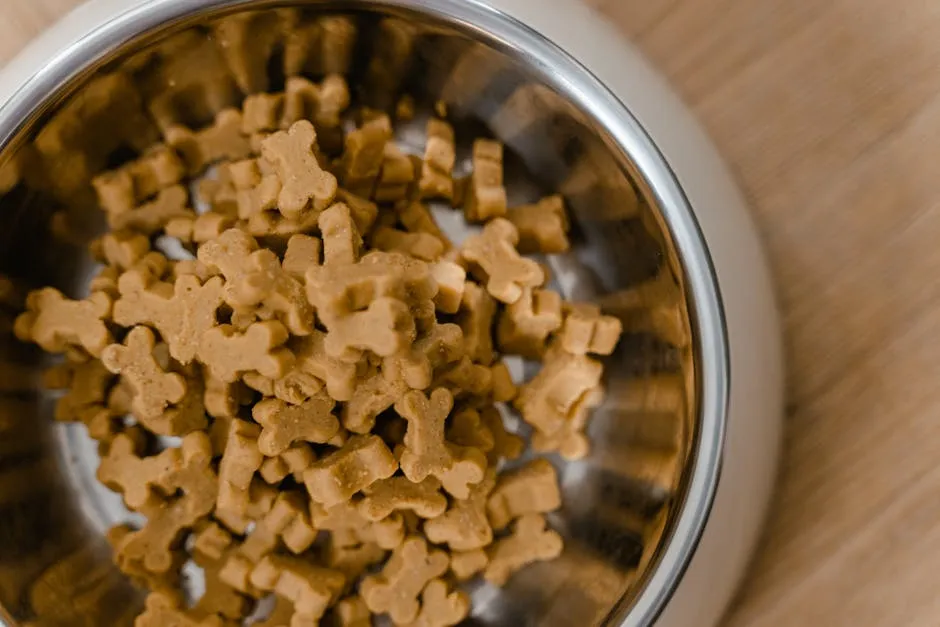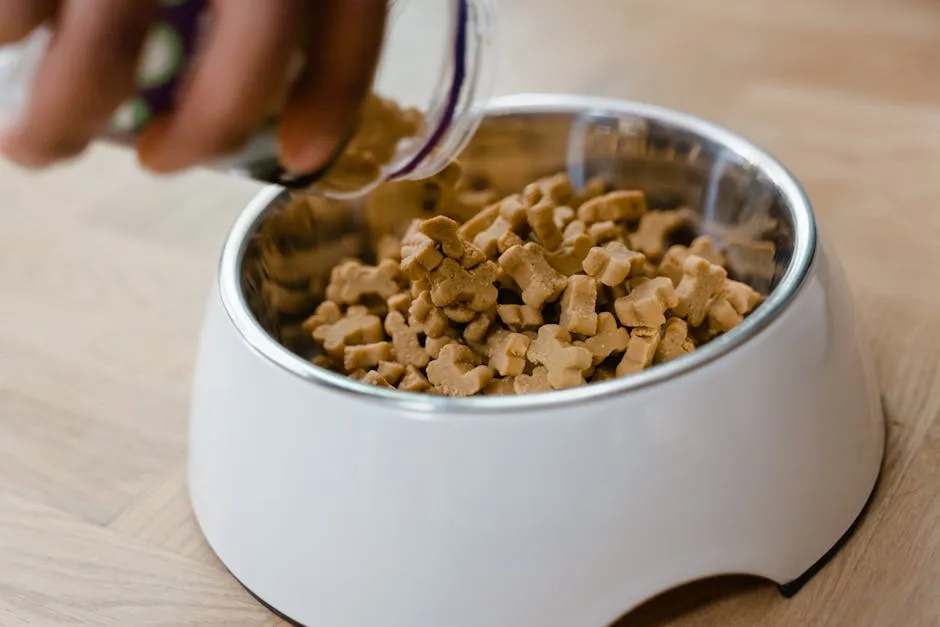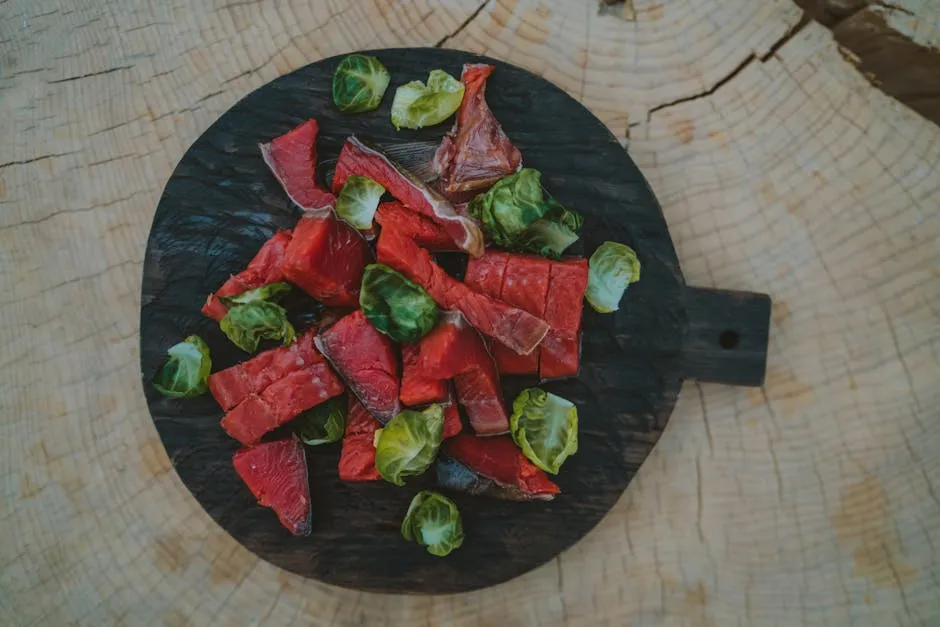Introduction
The dog food aisle is a battleground. On one side, we have kibble, the long-standing champion of convenience. On the other, raw dog food, the upstart challenger that’s gaining popularity. Pet parents are increasingly curious: which diet is better for their furry friends?
Kibble offers simplicity; it’s easy to store, serve, and often budget-friendly. However, raw food enthusiasts rave about the perks of fresh, unprocessed ingredients. They argue that raw diets lead to shinier coats, improved digestion, and fewer health issues. But is it all just hype?
This debate is more than a trend; it’s about your dog’s health and longevity. Understanding canine nutrition helps you make informed choices. Whether you lean towards kibble or raw, knowing the pros and cons is essential for your pup’s well-being. Let’s break it down!

The Evolution of Dog Food
Historical Context
Once upon a time, dogs dined on table scraps, bones, and whatever leftovers their humans could spare. The first dog biscuits emerged in the late 1800s, thanks to James Spratt. By the 1920s, commercial kibble was born, with the F.H. Bennett Biscuit Company paving the way for dry dog food.
Fast forward to the 1960s, and extrusion technology revolutionized kibble production. This method allowed for mass production and longer shelf life, making kibble the go-to choice for many. Despite its convenience, concerns about its nutritional quality lingered.
In the late 20th century, raw feeding gained traction. Pet owners began to question the quality of kibble. The movement advocates for a return to more natural eating habits, mirroring what dogs would consume in the wild. Now, dog owners face a choice: stick with the tried-and-true kibble or venture into the world of raw feeding.
Understanding this evolution sheds light on why choosing the right diet is crucial for your dog’s health today. And speaking of storage, why not keep your dog food fresh and pest-free with a Dog Food Storage Container? Trust me, your pup will appreciate it, and so will your pantry!

Understanding Kibble
What is Kibble?
Kibble is a popular dry dog food. It’s made using a process called extrusion. This involves cooking ingredients at high temperatures. Common ingredients include meat, grains, and vegetables. Often, fillers and preservatives sneak in, too.
Kibble typically contains protein from sources like chicken or beef. Grains like corn and wheat are also common. While these ingredients provide energy, they may not be the best for dogs. The high heat used in manufacturing can destroy some nutrients. So, it’s crucial to check the label for added vitamins and minerals.
The convenience of kibble is hard to beat. It’s easy to store, measure, and serve. Plus, it has a long shelf life. Just grab a bag, and you’re good to go!
However, the manufacturing process raises questions. The high heat can make some nutrients less available. This might affect your dog’s overall health in the long run. To ensure your pup gets the most out of their meals, consider using a Dog Food Kibble Dispenser. It can help keep your dog’s food fresh and ready to serve!

Pros and Cons
Pros:
– Kibble offers convenience. No need for refrigeration, and it’s easy to serve.
– It’s generally cost-effective compared to raw diets. You get a full bag for less than fresh options.
– Kibble has a long shelf life, making it practical for busy pet owners.
Cons:
– Many kibbles contain high carbohydrate levels. This can lead to obesity and other health issues.
– Some kibble brands include potential allergens like corn and soy. These can upset sensitive stomachs.
– Nutrient density might be lower compared to raw diets. Your dog may miss out on essential nutrients found in fresh food.
Many pet owners are choosing kibble for its ease. However, it’s essential to consider potential downsides. Quality varies, so always read the label. Look for high-quality protein and minimal fillers. This can help ensure your pup gets the nutrition they need. And while you’re at it, don’t forget to grab a Pet Food Scoop for easy serving!
Next time you’re at the pet store, take a moment. Check out the kibble options. Ask yourself: Is this the best choice for my furry friend?

Exploring Raw Dog Food
What is Raw Dog Food?
Raw dog food is a diet that mimics what dogs would eat in the wild. It often includes raw meat, bones, organs, and even dog-safe vegetables and fruits. Think of it as a canine culinary adventure!
Two primary feeding models exist within this realm: the BARF (Biologically Appropriate Raw Food) diet and the Prey Model Raw (PMR) diet. The BARF approach typically consists of 70% muscle meat, 10% bone, 10% organ meat, and 10% vegetables and fruits. In contrast, the PMR model emphasizes a simple mix of 80% muscle meat, 10% bone, and 10% organ meat.
The beauty of raw feeding lies in its nutritional diversity. Fresh ingredients provide essential nutrients, enzymes, and amino acids that are often lost in processed kibble. This diet aims to fulfill a dog’s biological needs and offers a more natural alternative. To help navigate this raw adventure, consider checking out a Raw Dog Food Recipe Book to guide you through the process!

Pros and Cons
Pros:
– Higher Nutrient Bioavailability: Raw dog food is rich in nutrients. Dogs can absorb these nutrients more effectively than those found in kibble.
– Improved Digestion: Many pet owners report better digestion with raw diets, leading to fewer gastrointestinal issues. A raw diet can also help alleviate food allergies in some dogs.
– Shinier Coats: A diet high in healthy fats often results in shinier, healthier skin and coats.
Cons:
– Safety Concerns: Raw diets can pose risks, including bacterial contamination. It’s essential to handle raw food safely to minimize these risks.
– Preparation Time: Preparing raw dog food can be time-consuming. It may require meal planning, sourcing fresh ingredients, and regular preparation.
– Cost Considerations: Raw diets can be pricier than kibble, depending on the ingredients and sources used.
While raw feeding has its set of advantages, it’s crucial to consider your dog’s individual needs and your lifestyle. Balancing convenience, safety, and nutritional quality will lead to a happy, healthy pup!

Comparative Analysis: Raw vs. Kibble
Nutritional Comparison
When it comes to canine nutrition, the battle of raw versus kibble often boils down to numbers—specifically, those tiny digits on the nutritional label. Let’s break it down!
Protein Content
Raw diets typically boast higher protein levels, primarily from fresh meat. For instance, raw dog food can contain around 30-40% protein. In contrast, kibble often lags behind, with protein levels ranging from 18-30%. That’s a big difference! Higher protein contributes to muscle development and overall energy.
Fat Levels
Fats are crucial for healthy skin and a shiny coat. Raw diets often include beneficial fats from animal sources, providing a healthy fat percentage of 15-25%. Kibble usually contains lower fat levels, around 8-15%, which can lead to dry skin and dull coats.
Carbohydrate Content
Here’s where kibble often goes off track. Many kibbles can contain 40-60% carbohydrates, primarily from grains and fillers. Dogs, being carnivores, don’t need this much carb! Raw diets, on the other hand, typically have less than 10% carbohydrates, focusing on protein and healthy fats instead.
Fiber
Fiber is essential for gut health. Raw food often contains natural fiber from fruits and vegetables, promoting better digestion. Kibble, however, may include added fiber, but it often comes from less digestible sources like beet pulp or corn. This can lead to digestive issues over time.
Digestibility
Now, let’s talk digestibility. Studies show that raw dog food is more digestible than kibble. A study from the University of Illinois found that dogs fed raw diets had lower triglyceride levels and firmer stools compared to those on kibble. This means they’re absorbing more nutrients and leaving fewer waste products. Better for them, better for your clean-up duty!

Health Implications
The health implications of feeding your dog raw versus kibble are significant and backed by research. A study published in the Journal of Animal Science indicated that dogs on raw meat-based diets (RMBDs) showed better health markers compared to those on commercial kibble. These health markers included improved dental health and lower levels of certain inflammatory markers.
Obesity
Obesity is a growing concern among our furry friends. Kibble’s high carbohydrate content can contribute to weight gain, leading to obesity-related issues like diabetes and joint problems. On the flip side, raw diets, being higher in protein and healthy fats, can help manage weight more effectively.
Diabetes
A study highlighted by veterinarians shows a correlation between high-carb diets and the onset of diabetes in dogs. Raw diets, with their lower carbohydrate content, may help mitigate this risk. Less sugar in the diet equals less insulin spike—pretty smart math, right?
Allergies
Kibble often contains common allergens like grains and artificial additives. Dogs with food sensitivities may experience skin irritations or gastrointestinal issues. Shifting to a raw diet can alleviate these symptoms as it eliminates many potential allergens. Many pet owners report significant improvements in their dog’s skin and coat health when switching to raw.
Dental Health
Let’s not overlook dental health! Raw bones can act like natural toothbrushes, helping to remove tartar buildup and promote healthier gums. Kibble, while marketed as beneficial for dental health, often doesn’t provide the same mechanical cleaning benefits.
In summary, while both diets have their merits, raw food often comes out on top in terms of nutritional value and health benefits. However, transitioning your pup requires careful planning to ensure they receive a balanced diet tailored to their specific needs. Always consult with a veterinary nutritionist when considering a switch!

Owner Considerations
Choosing the right diet for your dog is no small task. It’s like picking the perfect outfit for a date—there’s a lot to consider! Here are some key factors to keep in mind when deciding between kibble and raw:
1. Dog’s Age: Puppies, adults, and seniors have different nutritional needs. Puppies require higher calories and nutrients for growth. Senior dogs may need fewer calories and more joint support.
2. Activity Level: Active dogs need more energy, often found in higher protein diets. Couch potatoes? They might do better with something lighter, like kibble.
3. Health Conditions: If your dog has allergies, sensitivities, or specific health issues, consult your vet. Certain diets may exacerbate conditions like pancreatitis or obesity.
4. Personal Beliefs: Are you a “fresh food only” kind of person, or do you trust the convenience of kibble? Your philosophy on pet care plays a big role in what you feed your pup.
Transitioning your dog from one diet to another shouldn’t feel like pulling teeth. Here are some tips:
– Start slow! Gradually mix the new food with the old over a week or two.
– Monitor your dog’s reaction. Any signs of digestive upset should prompt a reassessment of the transition.
– Be patient! Your dog may take time to adjust to the new texture or flavor. A little extra love during this period goes a long way.
And while you’re transitioning, don’t forget to keep your pup hydrated! A Dog Water Bottle with Bowl is a great way to ensure they always have fresh water on the go!

Expert Opinions
Veterinarian Insights
Veterinary professionals hold differing views on the raw vs. kibble debate. Many veterinarians express concerns about the potential risks associated with raw diets, particularly regarding bacterial contamination. They emphasize the importance of balanced nutrition and how many commercial kibbles meet these needs effectively. However, some veterinarians support raw feeding, citing studies showing health benefits like improved coat condition and digestion.
Consulting a veterinary nutritionist is crucial when considering a dietary change. They can provide tailored advice based on your dog’s unique needs and help avoid any pitfalls in transitioning.

Real-Life Experiences
Testimonials from dog owners who switched to raw diets often highlight remarkable transformations. For instance, one owner reported that their once lethargic Labrador became a bundle of energy, shedding excess weight and even overcoming allergies after making the switch. Another dog experienced a drastic improvement in skin health, with fewer itching episodes and a shinier coat.
Case studies further back these claims. A study found that dogs fed raw diets had firmer stools and lower triglyceride levels than their kibble-fed counterparts. These results suggest that a well-balanced raw diet could lead to overall health improvements. And for those concerned about dental health, consider including Dog Dental Chews in their diet to promote healthy teeth!

Conclusion
In the raw vs. kibble debate, there’s no one-size-fits-all solution. Each dog has unique needs based on age, activity level, and health status. Understanding these factors can help you make informed decisions that benefit your furry friend.
As you consider your options, keep a close eye on your dog’s health and behavior. Don’t hesitate to consult professionals for guidance. After all, you want your pup to thrive, whether they’re munching on kibble or savoring raw delights! And don’t forget to keep their feeding area clean with a Dog Food Mat to catch those pesky crumbs!
If you’re considering a raw diet for your senior dog, it’s essential to choose the right food. Check out this guide to choosing the right dog food for senior dogs for more insights.
Please let us know what you think about our content by leaving a comment down below!
Thank you for reading till here 🙂
All images from Pexels





